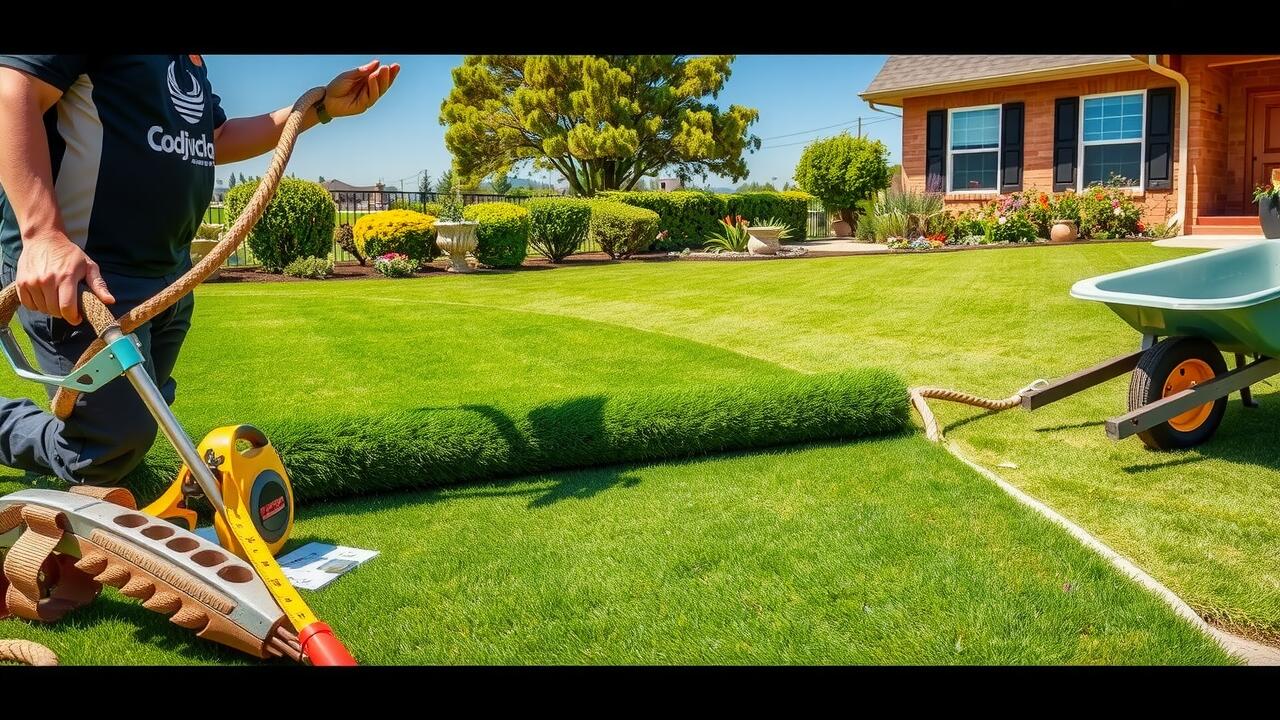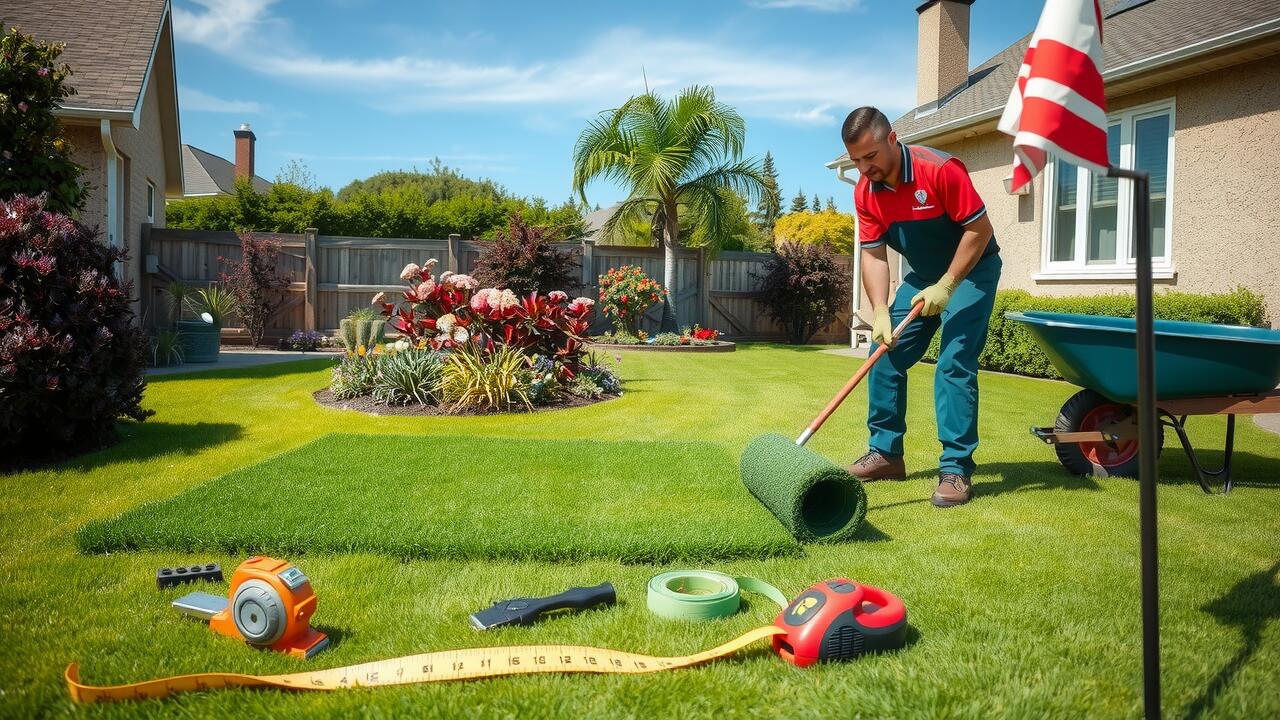
Alternatives to Artificial Grass
Natural grass remains a popular alternative to artificial grass for homeowners seeking a traditional lawn aesthetic. It requires regular maintenance, including mowing, watering, and fertilization, but offers a cooling effect and a habitat for beneficial insects. Many appreciate the environmental benefits of real grass, such as improved air quality and natural stormwater management. These qualities make it an appealing option for those committed to sustainability while enjoying outdoor spaces.
Another option is xeriscaping, which incorporates drought-resistant plants and landscape designs that minimize water usage. This landscaping approach focuses on native species that thrive in local climates. By reducing the need for frequent irrigation, xeriscaping is increasingly favored in areas facing water shortages. Unlike artificial grass, these natural solutions provide biodiversity and aesthetic value while promoting responsible water consumption.
Sustainable Landscaping Solutions
Sustainable landscaping solutions focus on creating eco-friendly environments that minimize water usage and promote biodiversity. Many homeowners and businesses are exploring options that reduce the reliance on artificial grass. Native plants, for example, require less irrigation and provide habitats for local wildlife. Incorporating xeriscaping techniques can drastically lower water consumption while still delivering an aesthetically pleasing landscape.
In addition to choosing native flora, utilizing permeable paving and rain gardens helps manage stormwater runoff. These practices not only enhance the beauty of outdoor spaces but also contribute to the overall health of the ecosystem. As communities prioritize sustainability, the shift away from artificial grass toward these solutions is expected to gain momentum, aligning with broader environmental goals.
Public Perception of Artificial Grass Bans
As discussions surrounding the potential ban on artificial grass gain momentum, public perception remains mixed. Many homeowners appreciate the low maintenance and aesthetic appeal of synthetic lawns. However, environmental concerns also drive skepticism. Critics highlight the impact of microplastics and potential harm to local ecosystems. These issues often influence opinions, leading to calls for alternatives that promote sustainable landscaping.
Community discussions reveal a growing awareness of the implications of artificial grass. Some residents advocate for more eco-friendly options, prioritizing natural solutions over synthetic materials. Others defend artificial grass, emphasizing its practicality in regions with limited water resources. This divide illustrates the complexity of attitudes toward synthetic turf as communities grapple with balancing convenience and environmental responsibility.
Community Opinions and Trends
Community attitudes toward artificial grass are evolving as awareness about environmental impacts grows. Many homeowners appreciate its low maintenance and durability, viewing artificial grass as a practical solution for lawns that demand less water and upkeep. However, there are concerns regarding its long-term sustainability, particularly around issues like heat retention and plastic pollution. As communities discuss the merits and drawbacks of synthetic options, a divide is becoming apparent between traditionalists who prefer natural grass and those who advocate for artificial alternatives.
Feedback from various neighborhood groups reveals a mix of support and opposition to potential bans on artificial grass. Proponents emphasize the convenience and eco-friendly aspects, especially in arid regions where water conservation is crucial. Conversely, opponents express worries about the aesthetic impact on local landscapes and the shift away from natural elements in community spaces. Local governments are taking these opinions into account as they explore potential regulations surrounding artificial grass.
The Future of Synthetic Turf Legislation
Legislation surrounding artificial grass is evolving as communities and environmental groups advocate for more sustainable landscaping practices. Some jurisdictions have already enacted measures that either restrict or monitor the use of synthetic turf in public spaces. These changes reflect growing concerns about the environmental impact of artificial grass, including heat retention, potential microplastics pollution, and water drainage issues.
Future legislation may focus on establishing stricter guidelines for the installation and maintenance of artificial grass. Some lawmakers are exploring options that would require manufacturers to provide information on the lifecycle and recyclability of their products. This potential shift could encourage innovation within the industry and promote the development of more eco-friendly versions of artificial grass.
Potential Changes on the Horizon
Several states and municipalities are currently considering legislation regarding the use of artificial grass. Concerns about sustainability, environmental impact, and water conservation play significant roles in this discussion. Some lawmakers are exploring potential bans or restrictions on new installations, particularly in areas facing severe drought conditions. This shift reflects a growing awareness of how synthetic materials can affect local ecosystems and water supply management.
As public interest in sustainable practices rises, the conversation around artificial grass will likely intensify. Local communities have begun actively engaging in dialogues regarding the environmental footprint of synthetic turf. Emerging trends may lead to increased support for alternative landscaping solutions, eventually shaping regulations that better align with ecological goals. The future of artificial grass use will hinge on a blend of scientific research, public sentiment, and evolving policy frameworks.
FAQS
Is artificial grass currently banned in any states or cities?
As of now, there are no widespread bans on artificial grass in the United States; however, some cities and localities are considering regulations due to environmental concerns.
What are the benefits of using artificial grass?
Artificial grass offers several benefits, including low maintenance, water conservation, and durability, making it an appealing option for homeowners and commercial properties.
What are some sustainable alternatives to artificial grass?
Sustainable landscaping solutions include native plants, xeriscaping, natural grass, and permeable paving, which can provide environmentally friendly options for outdoor spaces.
How do community opinions influence legislation regarding artificial grass?
Community opinions can significantly impact legislation as local governments often consider public sentiment when drafting regulations or bans, leading to more informed decisions that reflect the desires of residents.
What changes could be on the horizon regarding synthetic turf legislation?
Potential changes may include stricter regulations on the materials used in synthetic turf, increased recycling efforts, and guidelines to ensure environmental safety as public awareness and concern grow.
